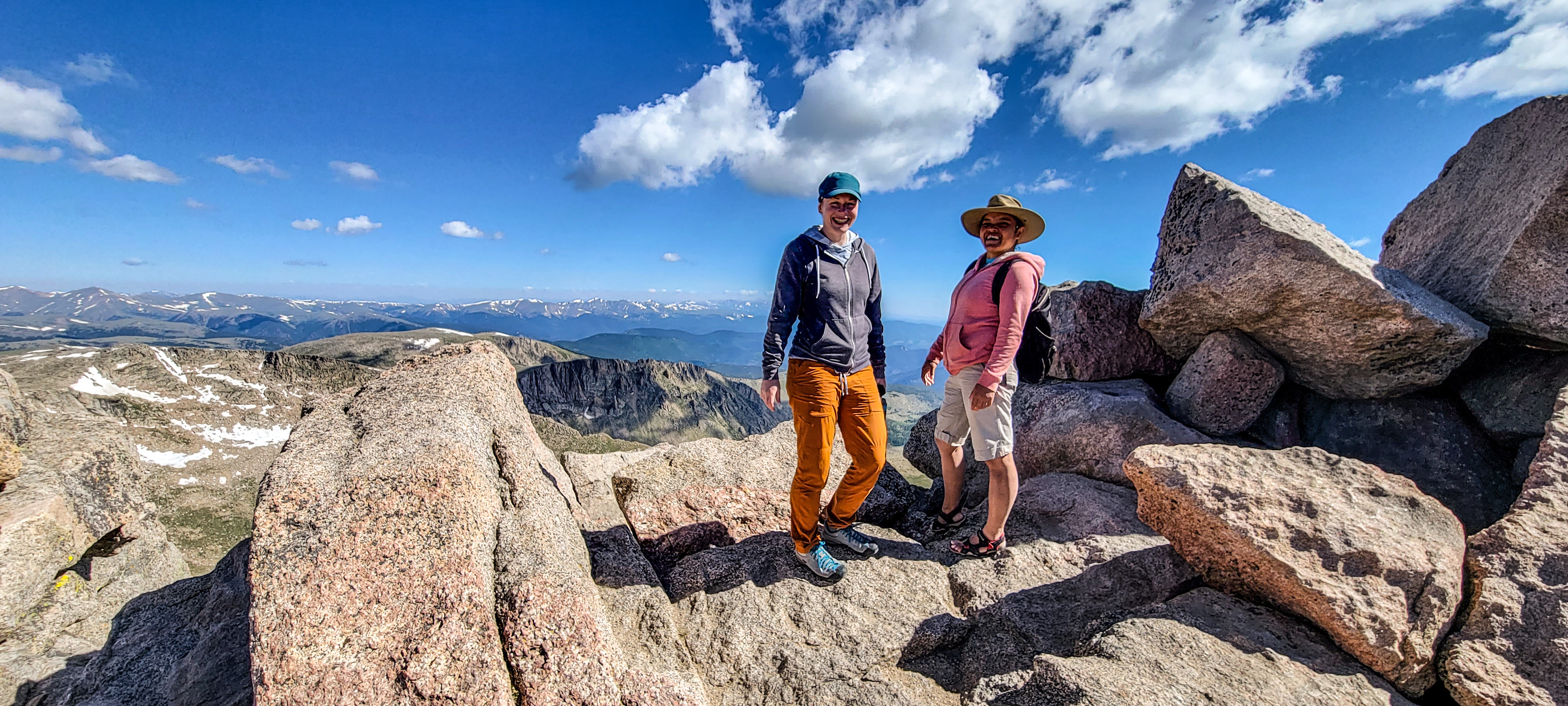
Before 2024 blinks by, we're writing to share news, give thanks and bring a smile to your face. Last year our Earth Sciences team sailed the seas of deep time — producing new knowledge, connecting community to science, reaching across borders and launching careers of budding scholars. Along the way, we hired one of our star alums, Gussie Maccracken, and welcomed a new director, Pat O'Connor. When not in the lab, collections or field, we connected with the public at the Museum and attended conferences near and far.
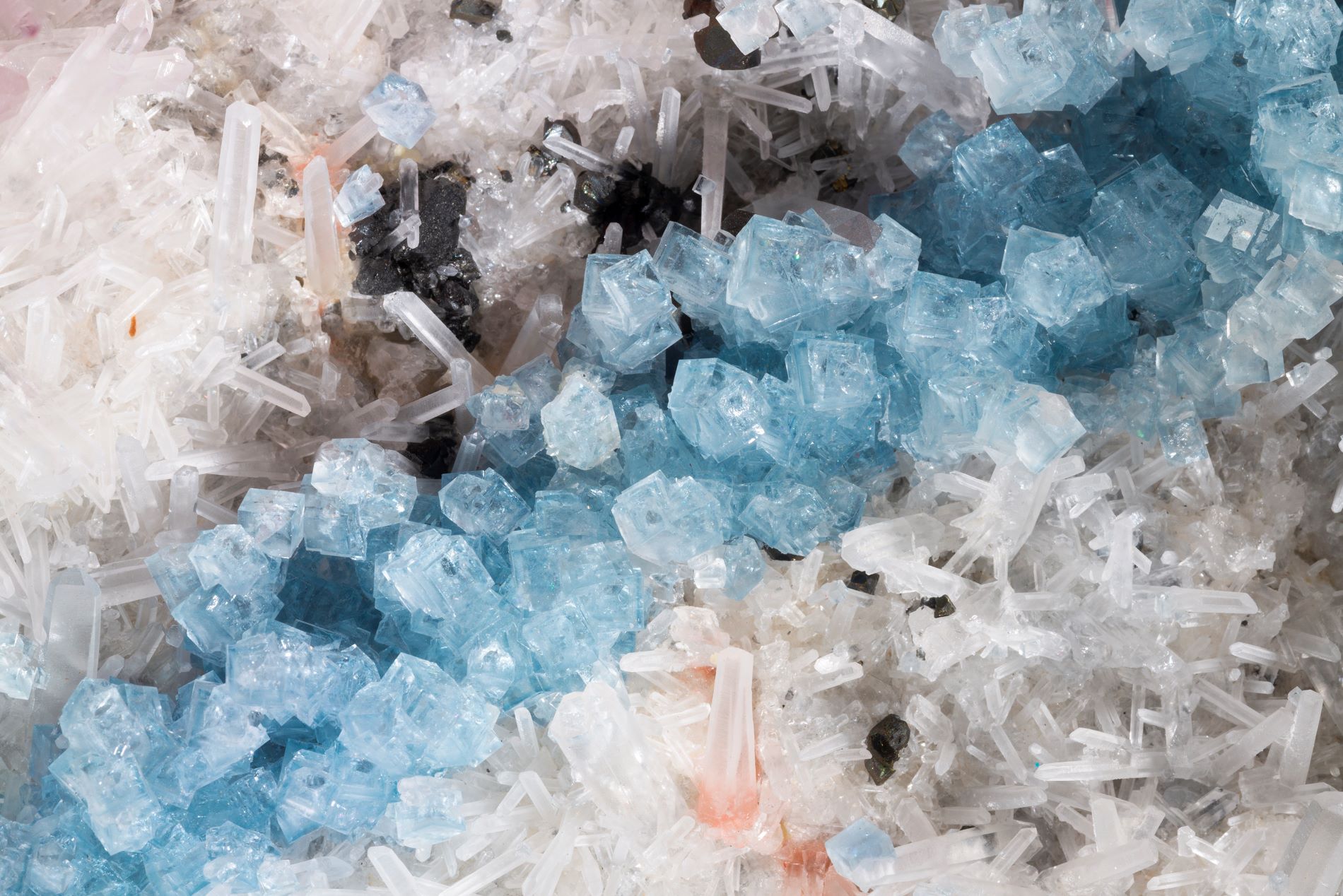
Blue fluorite and gray tetrahedrite crystals amid translucent needle quartz, from the Alma King rhodochrosite slab at the Denver Museum of Nature & Science. (Photo/ R. Wicker)
If you're in the Museum or the neighborhood, please reach out to any of us in the Earth Sciences Department. Or come to one of our free colloquium talks. We couldn't do this without your support—whether as volunteers, as members, as donors to our department or as science-friendly faces in our community. Thank you! Please read on about our team, our associates and our alums.
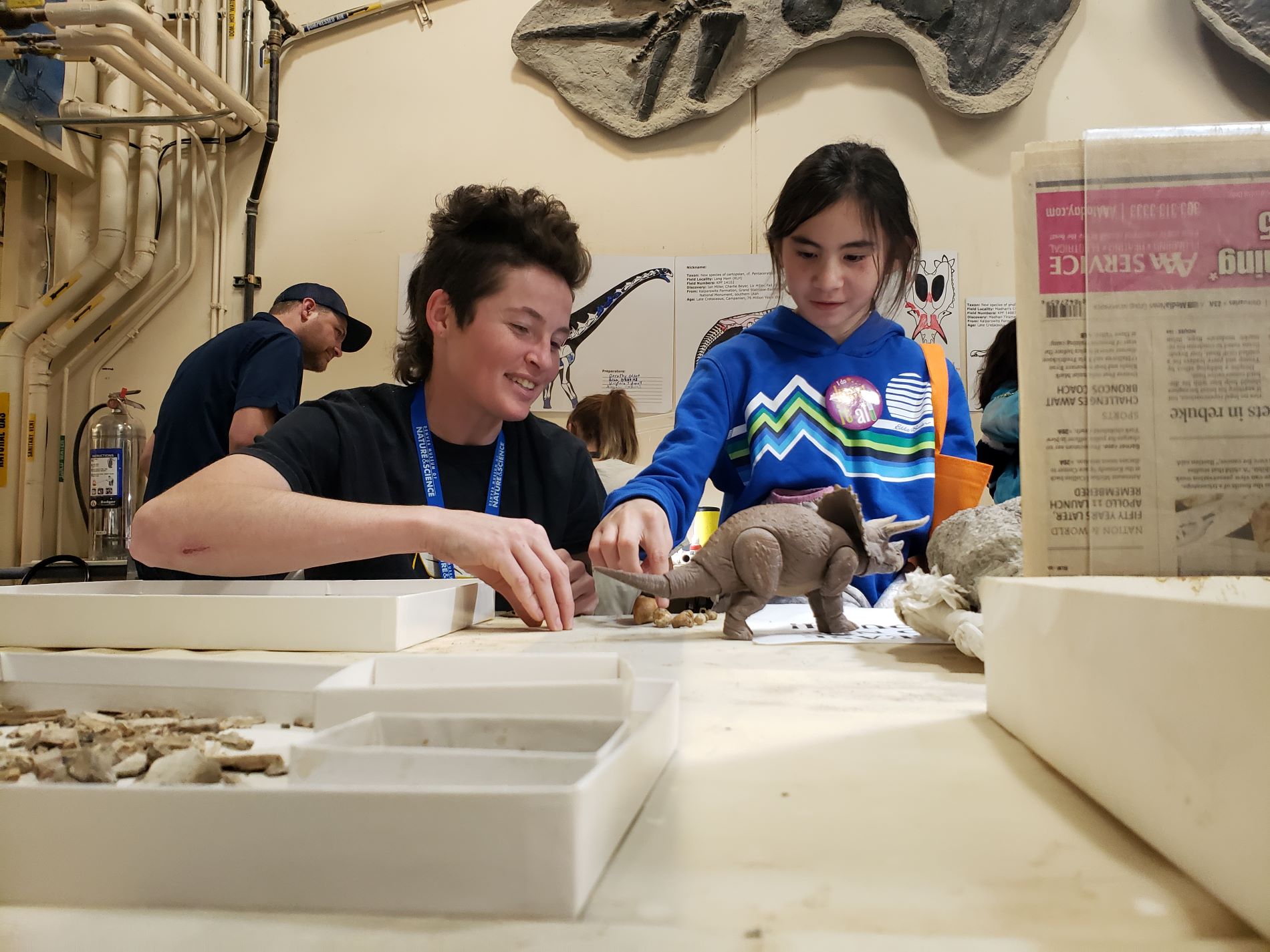
Emily Lessner demonstrating the difference between a coprolite and an invertebrate fossil during the Museum's annual Girls in Science event. (Photo/ L. Dougan)
Earth Science Welcomes New Staff
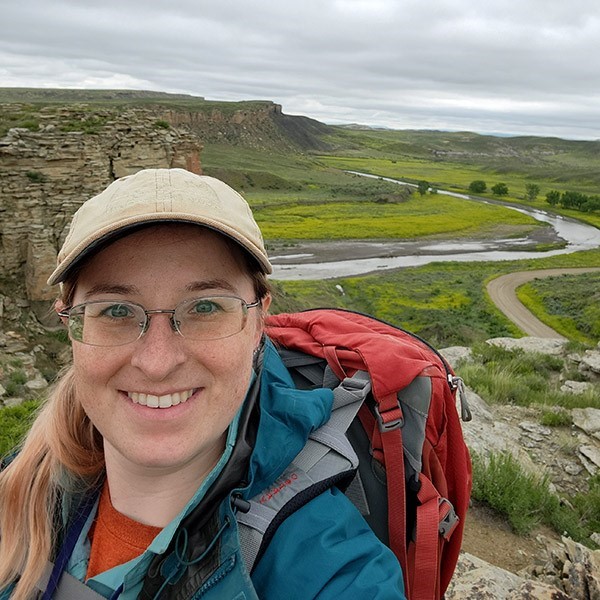
Annaka Clement in the field in Wyoming. (Photo/ A. Clement)
Joining our department is Postdoctoral Scholar Dr. Annaka M. Clement from North Dakota State University. Since arriving, she's done fieldwork in the Cretaceous of Wyoming, mentored high school students curious about STEM careers and begun deciphering how ice age landscapes influenced human colonization of the Rockies. In her spare time, she's also explored quite a bit of the Star Wars universe. Welcome, Annaka!
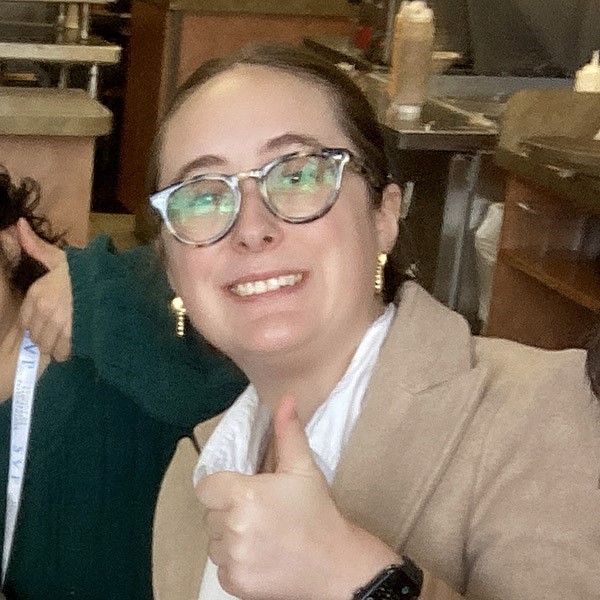
Sierra Swenson at a lab lunch. (Photo/ S. Bastien)
Collections Manager Sierra Swenson joined our team and is taking us to new levels. She inventoried our oversize Madagascar specimens, helped interns catalog and upload more than 2,000 fossils to our new Symbiota portal, created a display in our B2 workshop and showcased specimens at outreach events, including the “Friday the 13th Tattoo Event.” Way to go and welcome, Sierra!
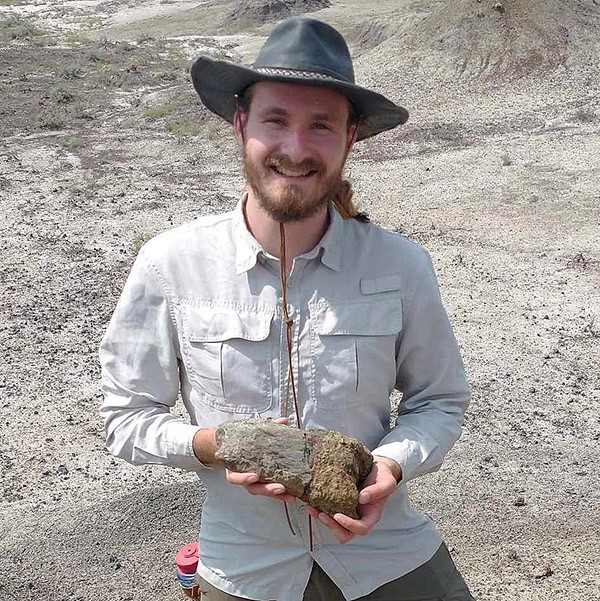
Rudolph Hummel holding a dinosaur bone in the field in North Dakota. (Photo/ T. Lyson)
With Sierra, new Research Assistant Rudolph Hummel has inventoried and cataloged over a thousand molds and casts of Madagascar fossils and has developed a novel method for labeling silicone molds with a commercial tattoo pen. They're also spearheading a social media campaign for the Madagascar Project, so stay tuned for marvelous #MadagascarMonday posts!
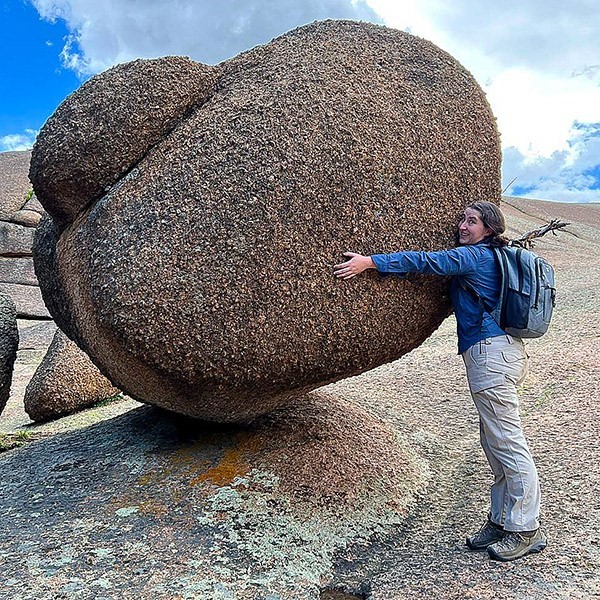
Nicole Childs hugging a giant spheroidally weathering granite in the Lost Creek Wilderness. (Photo/ N. Neu-Yagle)
Collections Manager Nicole Childs also joined our collections team, where she immediately helped us integrate a new kimberlite collection and organized a display of Denver Museum of Nature & Science topaz that won an educational award at the Denver Gem & Mineral Show. Her mineral expertise is much appreciated in our department and by the Museum's mineral hall renovation team. What a gem!
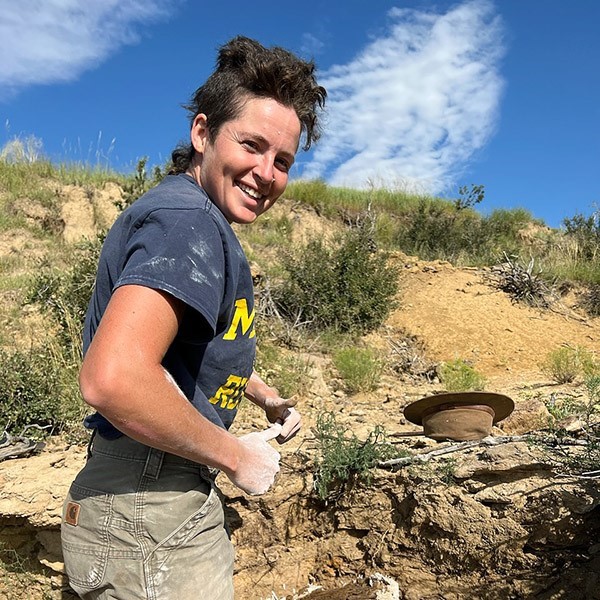
Emily Lessner finishing jacketing a Paleocene snapping turtle at Corral Bluffs. (Photo/ T. Martin)
Postdoctoral Researcher Emily Lessner joined our Digital Research Lab, where she's been reconstructing crocodilian fossils from Colorado Springs. In between it all, she conducted fieldwork in Colorado, Utah, North Dakota and surfed collections at partner museums to better understand crocodile brains. Most exciting, though — she just landed a job as Bureau of Land Management's paleontologist in Moab, Utah. Congrats!
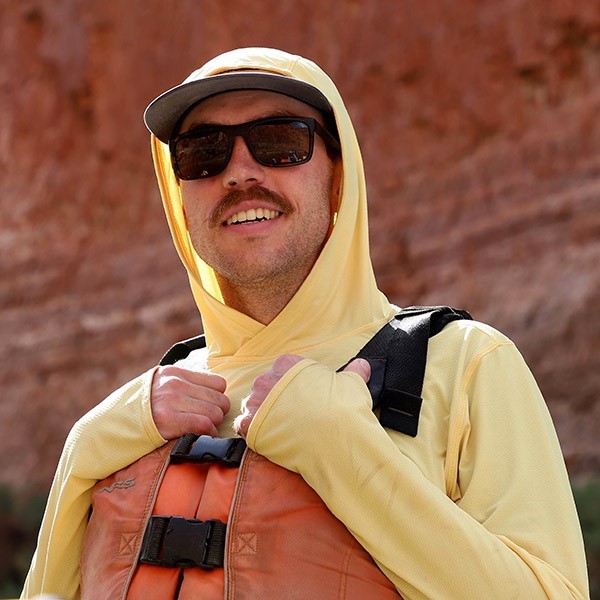
Salvador Bastien in full raft gear for a day of fieldwork in the Grand Canyon. (Photo/ L. Crossey)
Preparator and Alum Salvador Bastien, an intern in 2018, took his rock-climbing skills to new levels this year — in Cambrian strata of the Grand Canyon. In between, he collected leaves in Colorado, dinosaurs in North Dakota and helped train a new cohort of lab volunteers. We love the new screens and bubblers he built for our field lab, and the sweet K-Pg boundary block he made, too!
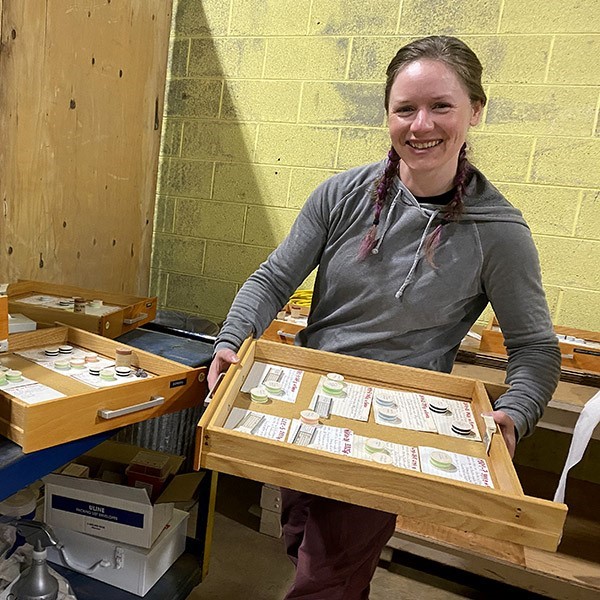
Nicole Neu-Yagle, packing up the Charlie Sandberg fossil collection for transport to the Museum. (Photo/ J. Hagadorn)
Collections Manager Nicole Neu-Yagle helped plan the overhaul of Coors Mineral & Gem Hall, including visits to local mines and mineral museums. Behind the scenes, she led cataloguing of around 10,000 plant and invertebrate fossils. To top it off, Nicole hiked, backpacked and snowshoed over 600 miles this year, including leading teams of Museum people to the top of Mount Blue Sky.
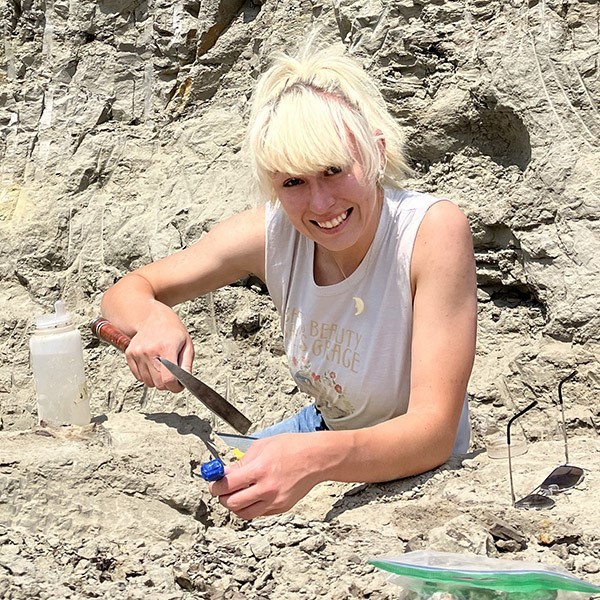
Sadie Sherman excavating a Cretaceous dinosaur from North Dakota. (Photo/ N. Toth)
Preparator and Alum Sadie Sherman, an intern in 2021, spent the first half of the year preparing huge Hell Creek fossils like Triceratops, before transitioning to "small" beasts like crocs and mammals from Colorado's D1 Sequence. In between it all, she did fieldwork in North Dakota, and attended the Association of Materials & Methods in Paleontology (AMMP) and Society Vertebrate of Paleontology (SVP) conferences. Next up? She's applying to grad school in paleontology!
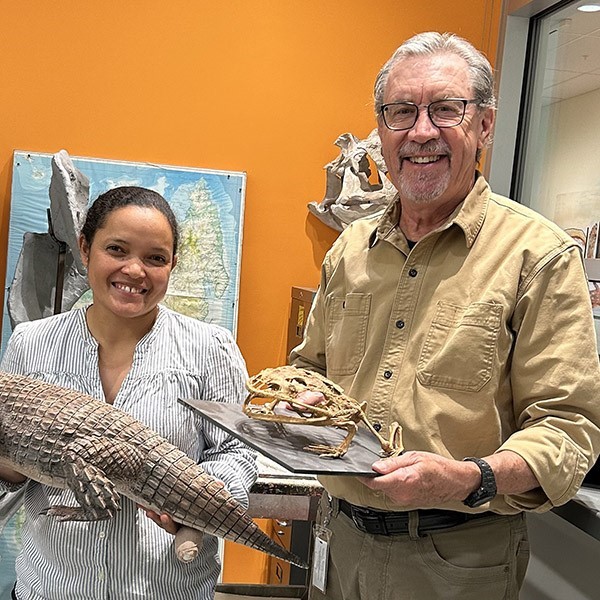
Dave Krause and Bakoli Rakotozafy holding some bizarre Cretaceous fossils from Madagascar. (Photo/ D. Krause)
A highlight of Curator Dave Krause's year was starting a three-year NSF grant to catalogue and prepare around 25,000 fossils from Madagascar. With Malagasy and DMNS colleagues he began a suite of training and outreach initiatives, including work to provide education and healthcare to children in his field area. See his Science With a Social Conscience lecture or ankizy.org.
Over the course of the year, Dave also channeled his inner cowboy as our Interim Director. We're grateful.
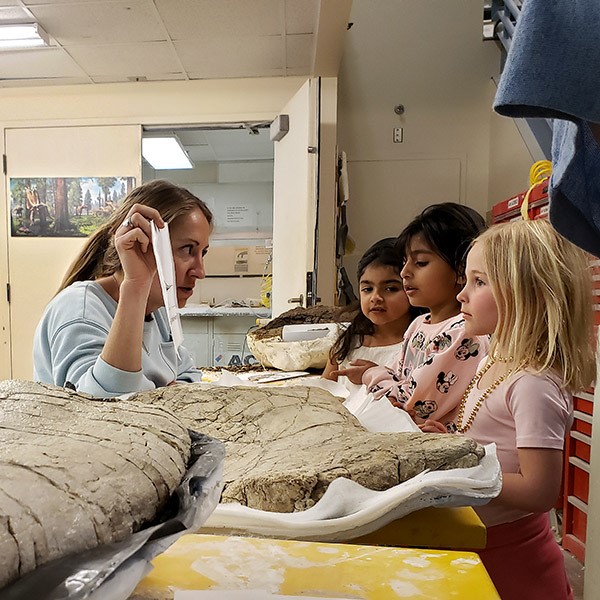
Natalie Toth explaining fossil preparation at the annual Girls in Science event. (Photo/ L. Dougan)
Whether in the Jurassic or the Paleocene, Preparator Natalie Toth laid bare fossils from all over the planet, shepherding their journey into our collections. Some, like "Pops" the Triceratops, are now on display. As our prep lab supercharger, Natalie also mentored a bevy of teens, interns and junior preparators in the lab and in the field, teaching them how to find, collect and care for fossils.
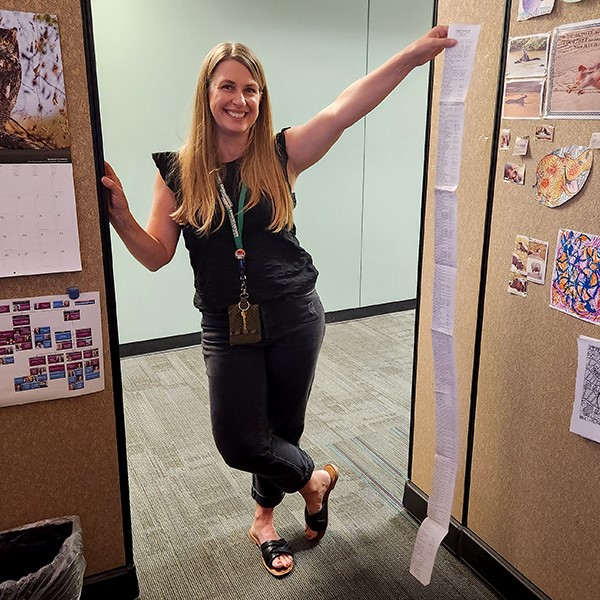
Libby Couch holding the longest receipt we've ever seen. (Photo/ C. Scheskie)
Our financial guru and Business Support Specialist Libby Couch taught us all how to keep our budgets in line. For perspective, this included tackling some life-sized receipts on our field expense reports. Literally! A highlight of Libby's year was commuting to the Museum over the summer with her teenage son, Henry, who volunteered as one of the Museum's docents.
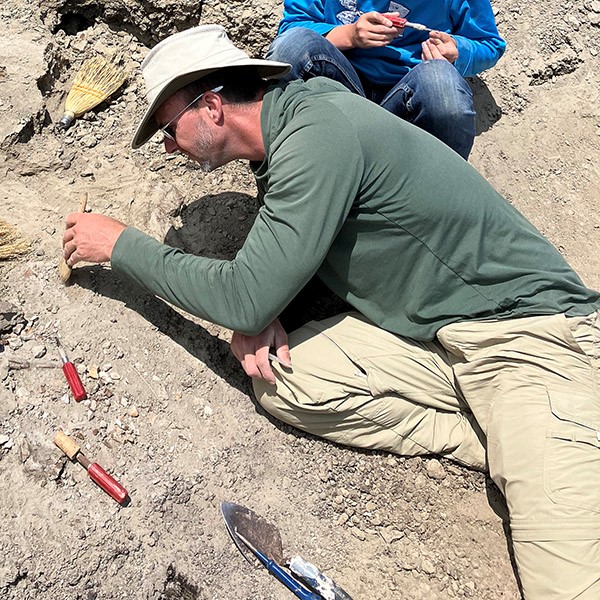
Tyler Lyson brushing off the latest dinosaur discovery from North Dakota. (Photo/ N. Toth)
Curator Tyler Lyson, together with Gussie and Dave, received the Museum's largest-ever research grant — for a five-year National Science Foundation (NSF) project to assess how terrestrial ecosystems diversified after the K-Pg extinction. Much of the work will be here in Colorado. Tyler and team's work in Corral Bluffs was also the focus of an international documentary, Apres la meteorite. Merveilleux!
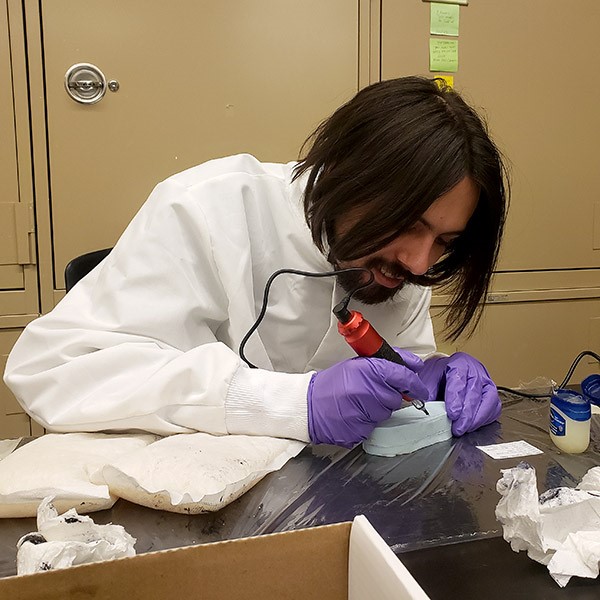
Eldon Panigot using a modified tattoo pen to label a fossil mold. (Photo/ L. Dougan)
A force behind our Digital Research Lab is Digital Preparator and Alum Eldon Panigot, an intern in 2021, who spent much of the year reconstructing Corral Bluffs fossils from X-ray CT volumes. When he wasn't doing digital "fieldwork," Eldon presented a poster at SVP, and helped host science outreach events at the Denver Museum of Nature & Science and with Museum's Curiosity Cruiser. Keep it up, Eldon!
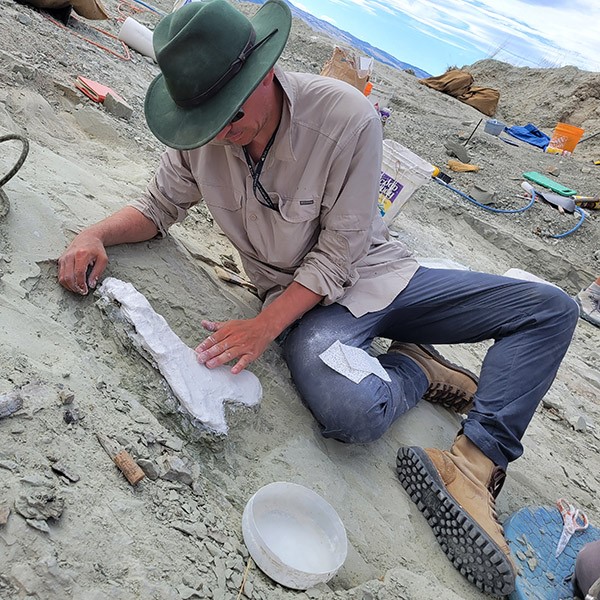
Holger Petermann jacketing a Jurassic sauropod rib in Wyoming. (Photo/ N. Toth)
Postdoctoral Fellow Holger Petermann spent most of 2023 making maps of what the Rockies looked like in the Mesozoic and Paleozoic. When he wasn't knee-deep in GIS or R, he was in the field, studying “fishapods” in the Devonian, dinos in the Jurassic, lizards and snakes in the Cretaceous, and mammals in the Paleocene. He also hosted his parents’ first visit to Colorado. What a year!
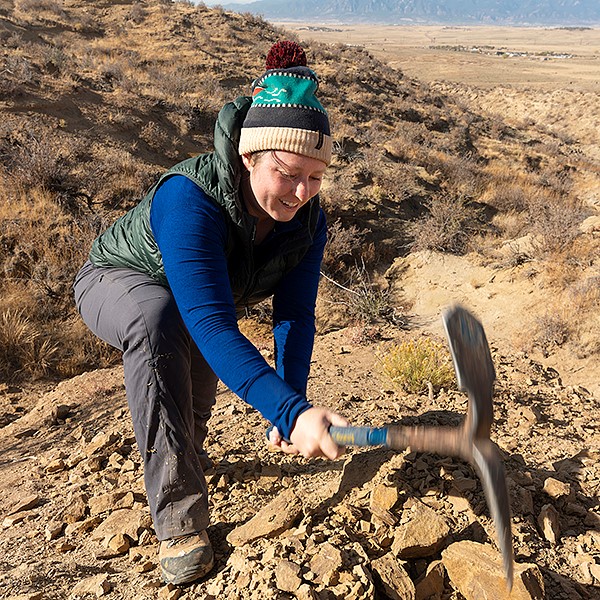
Gussie Maccracken splitting rocks to find fossil leaves at Corral Bluffs. (Photo/ R. Wicker)
Curator and Alum Gussie Maccracken began the year publishing a paper assessing which sampling methods reveal deep-time ecology of plant-insect associations. Toward the end of the year she sunk teeth into the K-Pg's paleobotanical aftermath—as part of the five-year NSF grant she received with Tyler and Dave.
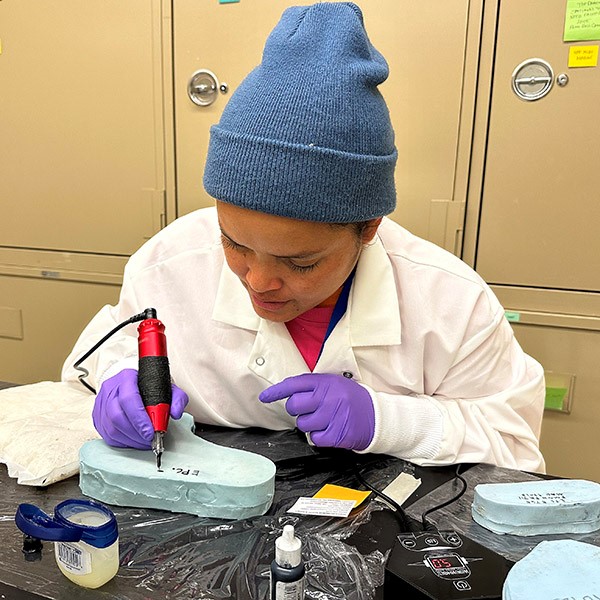
Bakoli Rakotozafy labeling latex molds of fossils. (Photo/ S. Swenson)
Preparator and Collections Assistant Bakoli Rakotozafy has just returned to Madagascar to complete her Ph.D., after a year of training and working in fossil preparation and collections management. While here, she tapped into local culture, including a Nuggets game and hiking a fourteener. Not to mention some Americana at the National Western Stock Show. We will all miss her!
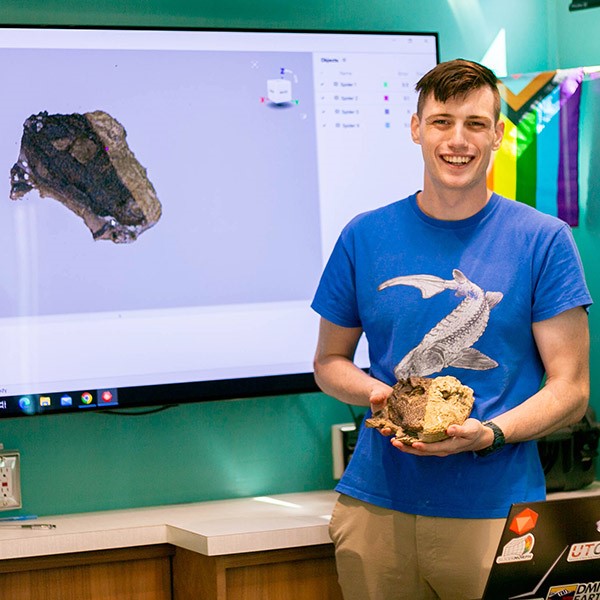
Franklin Duffy presenting a digital reconstruction of a fossil at a conference in Texas. (Photo/ F. Duffy)
Digital Preparator and Alum Franklin Duffy, an intern in 2021, presented his new machine-learning methods at several conferences and helped teach us how to use new surface scanners to make 3D models of fossils. Franklin also discovered a dozen new Devonian "fishapod" localities near Glenwood Canyon and recently applied to grad school. Soon he'll be Dr. Duffy!
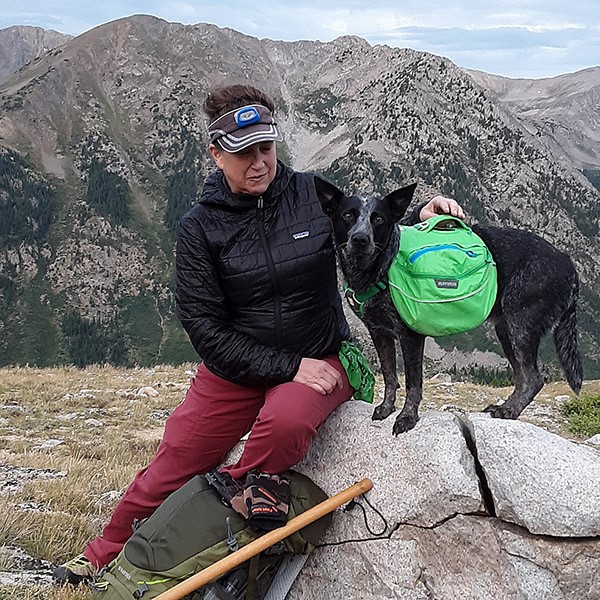
Kristen MacKenzie and Freya ascending Mt. Huron. (Photo/ K. MacKenzie)
On the heels of new Institute of Museum and Library Services (IMLS) and NSF grants, Collections Manager Kristen MacKenzie trained an ensemble of interns, volunteers and staff in the art of collections work. Together they reorganized our Hell Creek fossils, ushered Lance Formation dinosaurs up to the Prep Lab, and packed Dinosaur Park specimens to ship back to Canada. Next for Kristen? Another 14er with Freya!
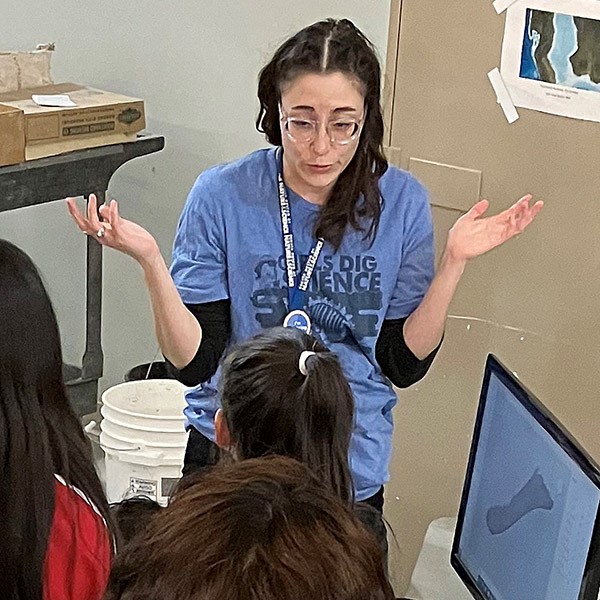
Lindsay Dougan explaining digital modeling at the annual Girls in Science event. (Photo/ N. Toth)
This was a big year for conferences for now-permanent Digital Preparator Lindsay Dougan, who participated in the Dragonfly, ToSca, NoCTURN and SVP meetings. Now that's an alphabet soup of science! Lindsay also made 3D printed objects for our temp exhibits, including a Neanderthal footprint, chimp skull and human brain. See the cerebral slicing and dicing on Denver Museum of Nature & Science TikTok.
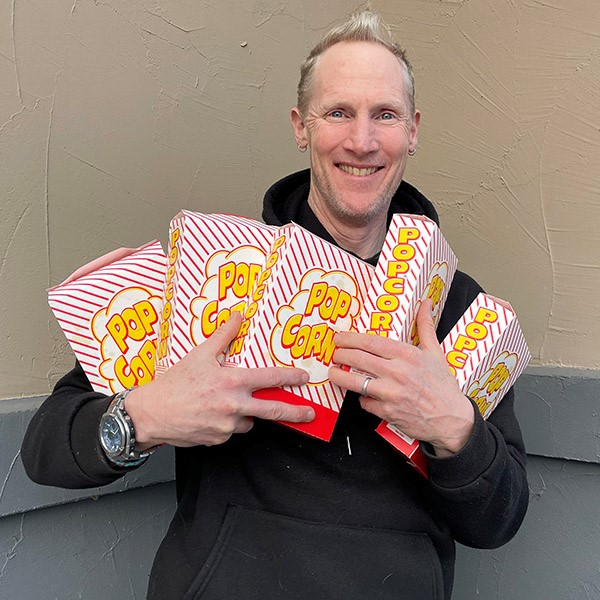
James Hagadorn holding valuable cargo. (Photo/ J. Hagadorn)
Curator James Hagadorn spent much of the year helping the Denver Museum of Nature & Science reimagine its mineral hall. He also published six peer-reviewed papers, mentored some brilliant interns and postdoctoral researchers, rafted the Grand Canyon and shot 50 science videos for museum social media channels. They're posted every Friday on YouTube. His favorite surprise discovery? Leftover museum popcorn!
Alumni & Associates
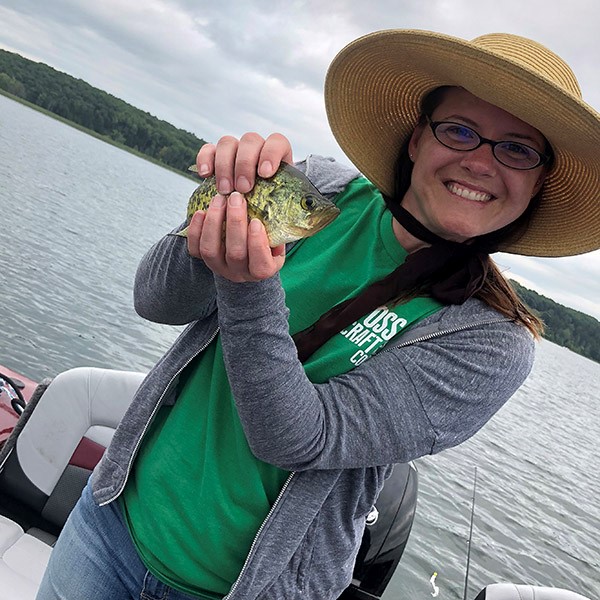
Conni O'Connor holding a crappie caught on Lake Shamineau in Minnesota. (Photo/ C. O'Connor)
After volunteering with our team, Conni O'Connor earned her B.S. at UC Colorado Springs, joined the Association for Materials & Methods in Paleontology and became a museum technician at Florissant Fossil Beds. Looking for 34 million-year-old flowers, spiders or birds? She knows where to find 'em. Her mission statement? Well-behaved women rarely make history. Spot on!
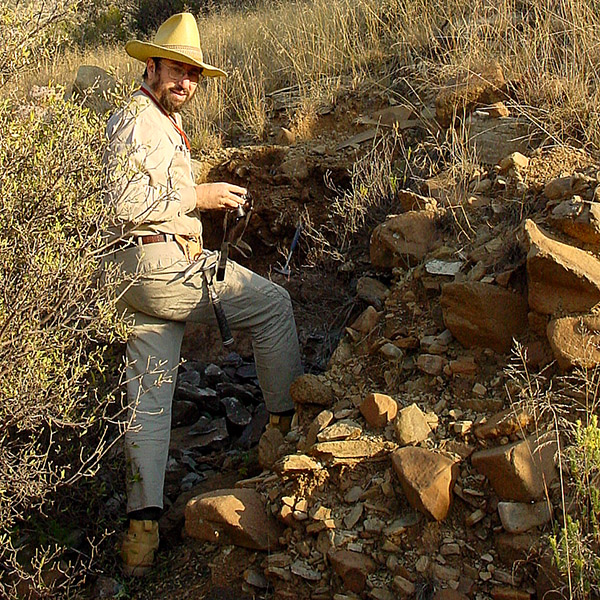
Conrad Labandeira examining late Permian strata in the Karoo Basin, South Africa. (Photo/ C. Labandeira)
Smithsonian Curator and Research Associate Conrad Labandeira is working on revision of the "Insect Damage Guide," a resource that grounds his work with Gussie Maccracken and colleagues in Mexico and S. Africa. Next up? He'll tackle paleoherbivory patterns in the Morrison and Cloverly formations of the Western Interior, and compare them to those of Asia.
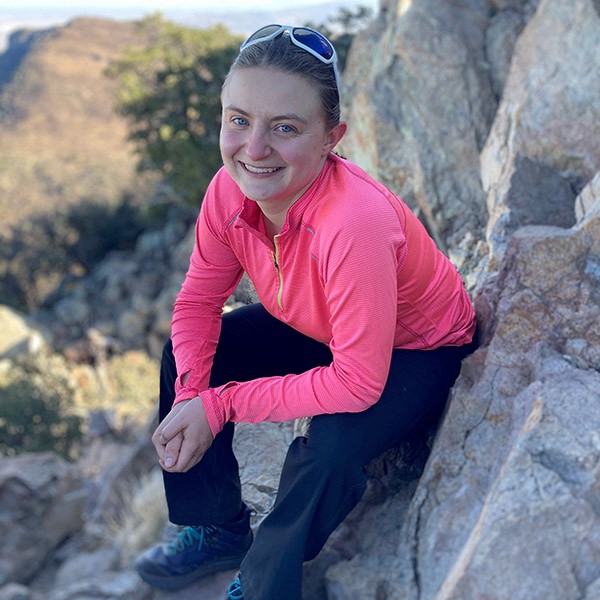
Callie Nellis in Big Bend National Park in Texas. (Photo/ C. Nellis)
A former Teen Science Scholar, Callie Nellis' Museum experience launched her career in earth sciences. After a geology degree at Pomona College and field camp in New Zealand, she landed a gig as a hydrologist at HDR in Austin, Texas. There she helps cities figure out how they're going to provide water to future populations. We need your help with that here in Colorado, too!
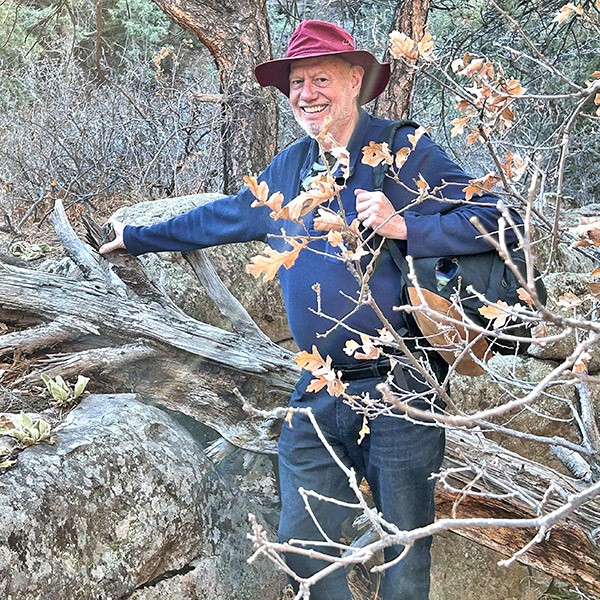
Mark Longman in the field in Castlewood Canyon State Park. (Photo/ J. Burleson)
Research Associate Mark Longman and his partner, Caroline, live in Hickory Corners, Michigan, near his grandparents' 1915 cottage. As a geologist in the oil and gas business, he interpreted the deposition and diagenesis of rocks all over the world. Since 2018, he's brought his passion for petrology to Museum projects — from D1 taphonomy to the Castle Rock Conglomerate.
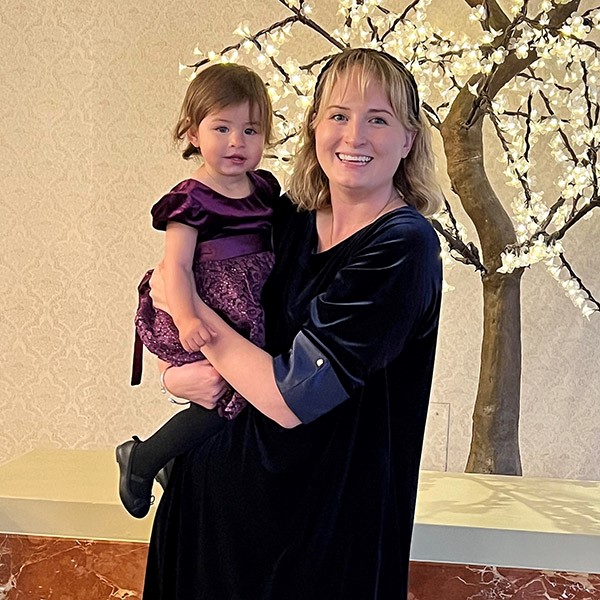
Christine Wood and daughter Autumn at the Brown Palace Hotel. (Photo/ C. Wood)
After volunteering at the Museum, Christine Wood got a degree in international relations and French, and then a M.S. in human resources. She works in Human Resources at ENT credit union. These days she's most excited to share her love of science and deep-time history with her 18-month-old daughter. Perhaps we'll see her as an intern...about 18 years from now.
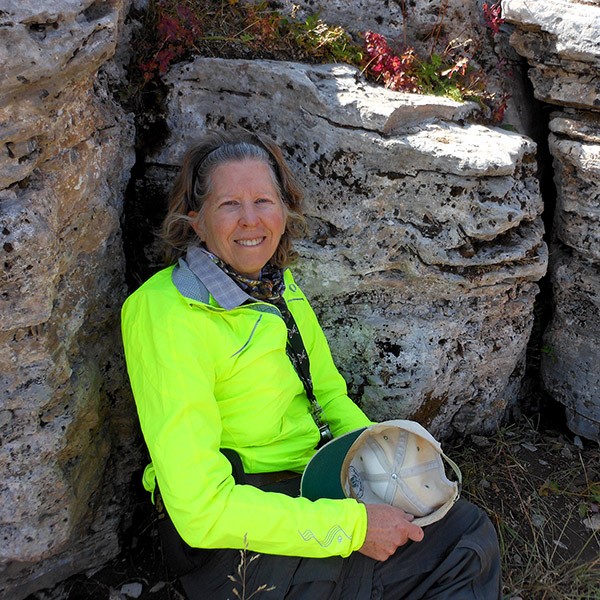
Linda Soar next to some stromatolitic carbonates of the Dyer Formation. (Photo/ C. Schoellhorn)
Research Associate Linda Soar loves stratigraphy and invertebrate fossils. She's been studying Colorado's Dyer Formation, including how its unusual lagoon-like environments changed across the end-Devonian mass extinction. When not hosting hummingbirds in her garden, Linda and husband Carlos bike, hike, camp and visit parks and museums.
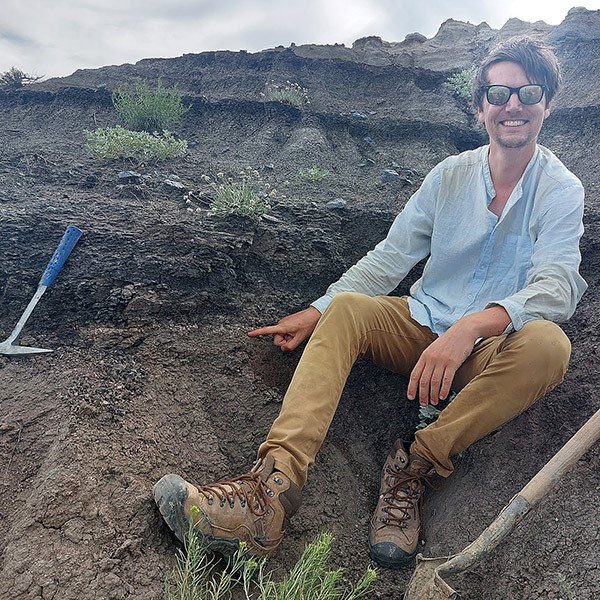
Erwin Zethof at the Cretaceous-Paleocene boundary in North Dakota. (Photo/ E. Zethof)
Since interning with us, Erwin Zethof has joined the dark side... abandoning his sensible life as a software developer for a job as a preparator in Holland's Naturalis Biodiversity Center. Swapping his keyboard for a Marsh pick, he's dug dinos in the Jurassic and Cretaceous of Wyoming and Montana, and someday hopes to find an articulated Megalodon. Best of luck!
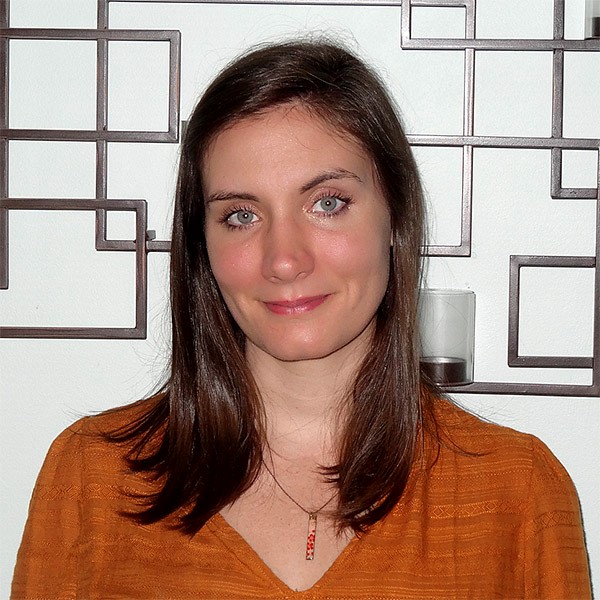
Jessica Storey-Nagy at Indiana University. (Photo/ J. Storey-Nagy)
After working with our team, Jessica Storey-Nagy moved to Indiana, where she earned a M.A., Ph.D., and Fulbright Scholarship at Indiana University. An expert on the linguistic landscape of political discourse in Hungary, she teaches at IU and occasionally advises troops deployed to eastern Europe. In her spare time, she enjoys running and playing guitar.
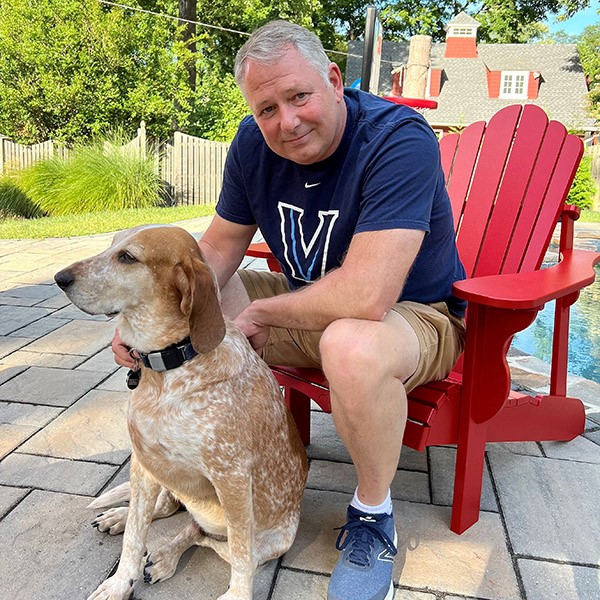
Scott Piskun with his dog, Dunkin, in Wayne, Penn. (Photo/ S. Piskun)
Scott Piskun began in our Paleontology Certification Program. He later worked with Richard Stucky and volunteered in a Museum partnership to teach Denver Public School students in the Balarat Outdoor Education Program. He's since moved to Wayne, Penn., where he and his wife are raising two sons and longing for a few Eocene fossils.
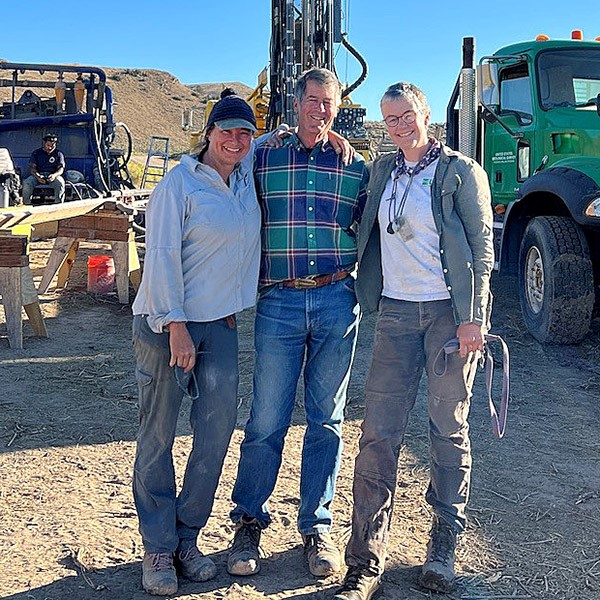
Museum Research Associates Regan Dunn, Bob Raynolds and Marieke Dechesne, left to right, at the United States Geological Survey Hanna Basin site in Wyoming, coring the Paleocene-Eocene boundary interval to document climate change. (Photo/ B. Raynolds)
In between his “Digital Earth” dome shows, Research Associate Bob Raynolds geologized in Kenya's Turkana Basin and Wyoming's Bighorn and Hanna Basins. Here in Colorado, he helped teach Mines' geophysics field school and led AAPG and CSS field trips. He also published a new Colorado Cretaceous stratigraphy chart. Go Bob!
See you on the rocks!
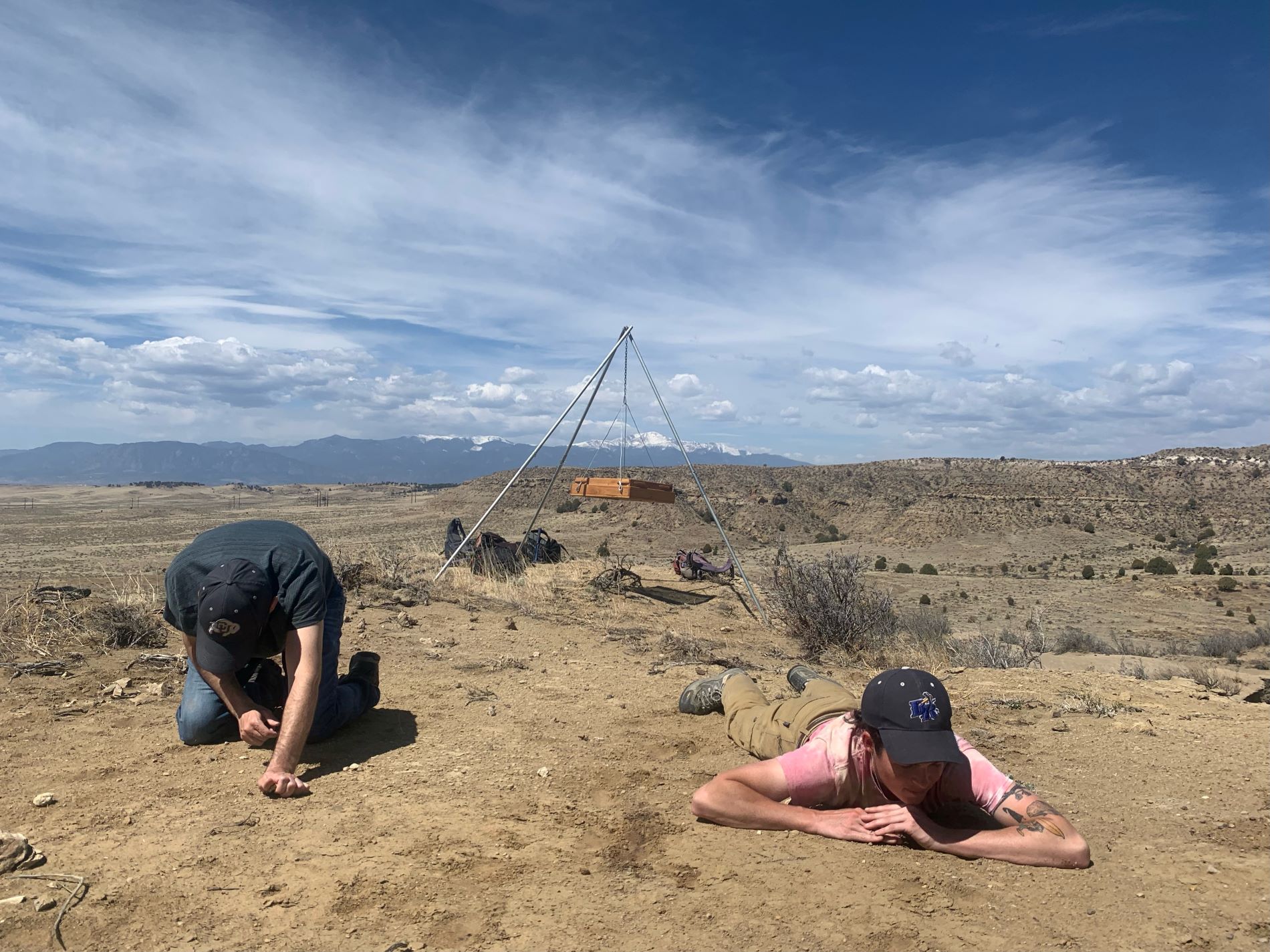
Jordan Cooper and Emily Lessner looking for tiny vertebrate fossils at Corral Bluffs, Colo. (Photo/ T. Lyson)
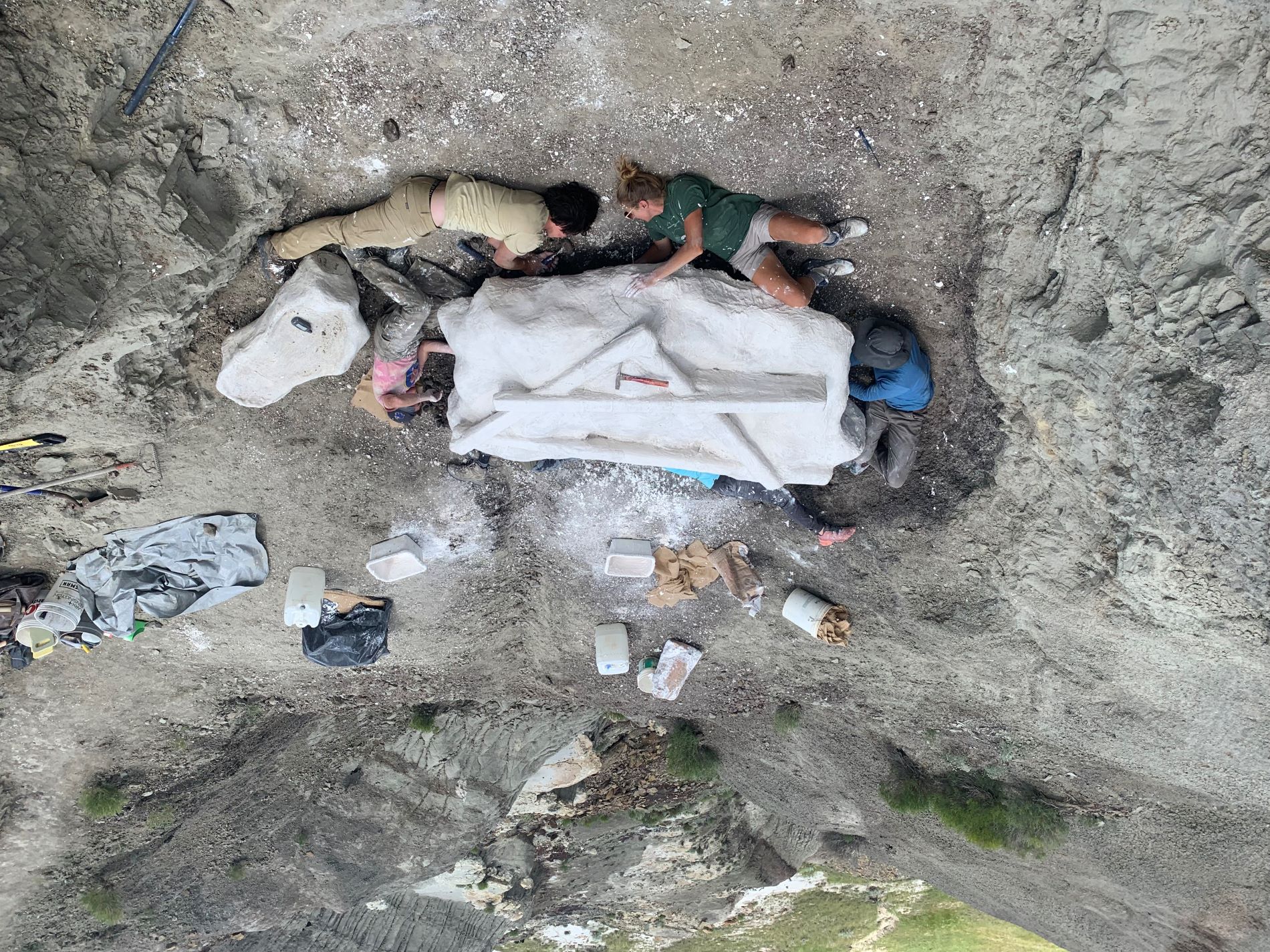
Natalie Toth and a team of Denver Museum of Nature & Science interns and volunteers working on the bottom of a giant plaster cast encasing a dinosaur from North Dakota. (Photo/ T. Lyson)